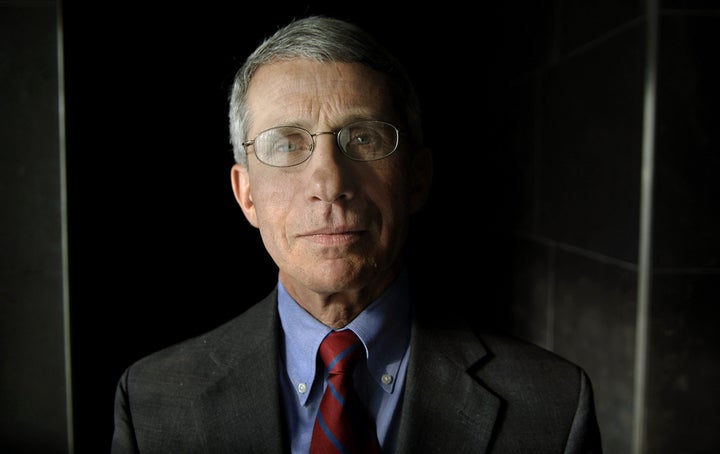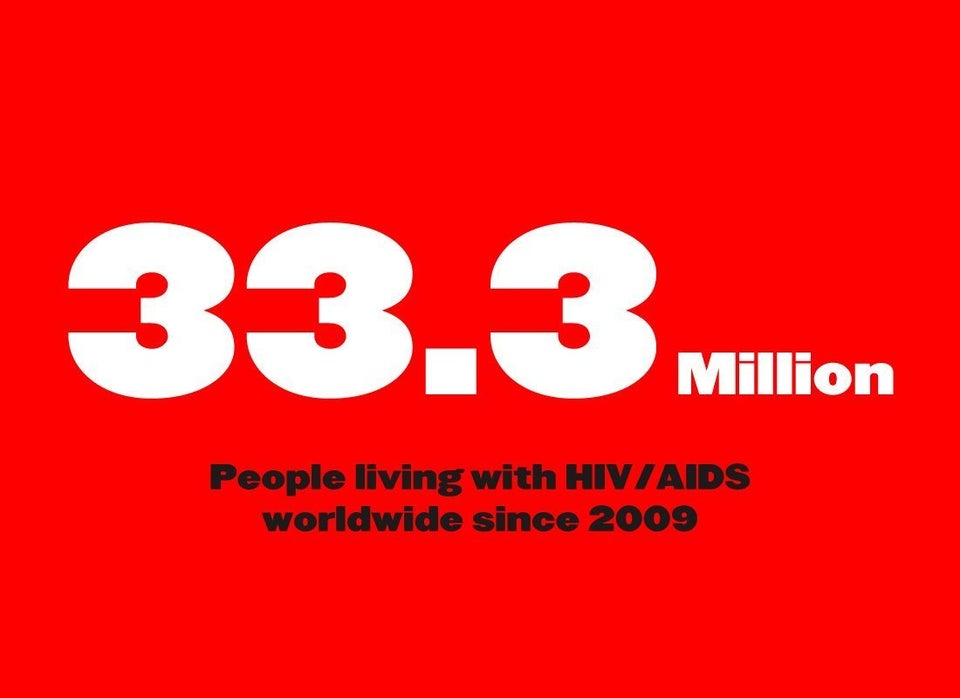
When Dr. Anthony Fauci first became director of the National Institute of Allergies and Infectious Diseases in 1984, hundreds of people in the U.S. had already died from a mysterious and terrifying disease we now know to be HIV/AIDS.
But even though the NIAID was in charge of finding treatments, vaccines and cures for communicable diseases, Fauci said his agency failed to act quickly enough in its search for effective medicines. The traditional research-to-pharmaceutical pipeline, of which Fauci remained staunchly in favor until a dramatic change of heart, took several years from start to finish -- and people with HIV and AIDS didn’t have years to wait. New experimental medicines weren't being shared with patients as soon as they were deemed safe; instead, they were held back until after clinical trials were conducted.
“I was trained as a healer, and I was healing no one,” said Fauci during a presentation at the medical conference TEDMED in late November. "This was unquestionably the darkest period of my professional career and, in fact, my life."
In 2015, the right cocktail of daily drugs can help someone with HIV live a long and healthy life, and a single daily pill known as PrEP can actually prevent people from getting HIV. But in 1984, people who started showing symptoms of HIV only had six to 18 months to live, and doctors like Fauci, who treated patients at the National Institute of Health's clinical center, were struggling -- and failing -- to find ways to keep their patients alive.
In addition to the lethal wait times for drug trial results, the trial protocols of the time required people to make unthinkable decisions, Fauci recalled. For instance, in the name of data purity, scientists had always kept experimental treatment trials separate so that they could clearly and accurately see each drug’s effect on health. But for someone dying of AIDS, that meant choosing to be part of a trial that delivered life-saving medicine, or to be part of a trial that could prevent blindness from cytomegalovirus, a common infection that afflicted people with AIDS.
"You’re telling me I can be on one drug or the other,” Fauci recalled a man in the Castro district of San Francisco telling him. "What kind of choice is that? I can either go blind or die?"
It’s rare for public officials to admit when they’re wrong. But in choosing to focus on one of the "darkest moments" in his career, Fauci hoped to highlight how conventional wisdom and adherence to bureaucratic processes can prevent good medicine from happening -- and to highlight the good that can happen when doctors start listening to the people who are literally fighting for their lives.

Letting patients drive change
Interactions with his patients and activists who demanded faster, better-funded and more accessible drug trials led Fauci to course-correct and publicly call for change in 1989, setting in motion a new federal approach to AIDS research.
He described halting the arrests of protestors at his office on the NIH campus in Bethesda, Maryland, asking police to bring protest leaders to his office to have the first of many dialogues about the need to loosen drug trial protocols.
"It was clear that something had to give, and at that moment that something had to be me,” Fauci said during his talk.
Dr. Paul Volberding, director of the AIDS Research Institute at the University of California, San Francisco, praised Fauci for focusing on the protesters.
"What turned Tony around was being able to see through the anger and to the fear, and then he respond to that fear by being helpful," Volberding told HuffPost. "That's the key to me in this whole thing."
Historian Jennifer Brier, director of gender and women’s studies at the University of Illinois at Chicago and author of the book Infectious Ideas: U.S. Political Responses to the AIDS Crisis, also praised Fauci’s decision to speak frankly at TEDMED about this contentious moment in AIDS history.
"It’s rare for a scientist to admit that they’re wrong in that kind of public space," said Brier.
Also rare, Brier explained, is that Fauci allowed patients and their allies, rather than internal opinions in the NIH, to influence the reform of drug trials and increase access to medications. There was a new emphasis on the patient as a person with a complex set of needs and goals -- not a data point to collect.
“These are moments where people who are often called 'patients’ are put in the center and understood as people and agents,” Brier said. "We owe a great deal to this movement and the women’s health movement that came before it, the reproductive justice movement, in part because it’s a different model of thinking about the relationship between patient and healthcare provider."
In other words, Brier explained, a previously paternalistic relationship in which “doctor knows best” began to be turned upside down at the height of the AIDS rights movement, as people with the virus began arguing for more access to experimental drugs and the right to have a say in their own treatment.

Jim Eigo was one of the activists who played a role in shifting the government's stance. Part of an activist group called the AIDS Coalition to Unleash Power, his group was focused on gaining access to experimental drugs. Eigo recalled in an oral history of ACT UP that he and his committee wrote Fauci in February 1988 about an idea called “parallel trials” -- the notion that a person with HIV/AIDS may be too sick, taking other drugs, or be ineligible in another way to enroll in a clinical trial, but could still receive the experimental drugs in a “parallel trial” that would also yield important, if imperfect, data.
“Our argument was, at the same time, you could also get dirty data on that person,” Eigo said in the 2004 oral history. "The data might not be absolutely clean, because the person would not -- was too sick to obey certain parameters … but, that sort of real world data, itself, would be invaluable, if you actually kept it.”
Eigo said that Fauci adopted this model, renamed it “parallel tracks,” and by June 1989, the program was gaining momentum. Eigo noted that these parallel tracks gave birth to the notion of the HIV drug cocktail in the first place, as the tracks were measuring the results of people taking multiple drugs.
"As much as I look back upon it as a victory, I still also am, at the same time, very conscious of what we were not able to accomplish and how broken the healthcare system within the United States continues to be,” Eigo concluded. "So, I don’t want to overstate what we did, but within the world we were handed at the time -- when five ACT UP members would die a month -- we, at the time, felt it was a great victory."
Today's AIDS activists spur change, too.
Fauci said the passion and commitment of AIDS rights activists stayed with him for years. When he arrived on the ground for a tour of Mozambique, South Africa, Botswana and Ivory Coast in 2002 to see how feasible it would be to create a program to grant patients in sub-Saharan Africa access to lifesaving medications, conventional wisdom was telling Fauci that logistical problems like cost and a lack of health care infrastructure were too large to overcome. Activists on the ground in thought otherwise.
"I felt like I was back in the 1980s in the Gay and Lesbian Community Center in Greenwich Village, or in the Castro district,” Fauci said of his time touring the African nations and visiting with HIV/AIDS advocacy groups. "These were smart people who were defying the conventional wisdom, who wanted to be able to have the opportunity to make something work.”
He went back to the U.S., presented a plan of action to President George W. Bush to funnel billions of dollars of AIDS medicines to countries in Africa, and then spent the rest of the year creating the architecture for the President’s Emergency Plan For AIDS Relief -- now regarded as the most globally transformative health initiative to combat one disease by a single country. It has saved and improved millions of lives, the non-partisan, non-profit Institute of Medicine found in a 2013 report, and helped partner countries build a sustainable health infrastructure.
Fauci ended his talk with an explicit warning for the doctors, scientists and medical entrepreneurs in the crowd at TEDMED to resist the instinct to reject change and instead embrace flexibility.
"I hope that my journey through AIDS activism will have you pause and listen instead of instinctively rejecting,” he pressed. "And think about the possibility of some flexibility, because the activists in the United States and in Africa, while not violating core scientific principles, did challenge conventional wisdom, and what we came to was a delicate balance between adhering to the fundamental principles of science even with some rigidity, at the same time that we had the flexibility to make things work in the real world."
Also on HuffPost:
